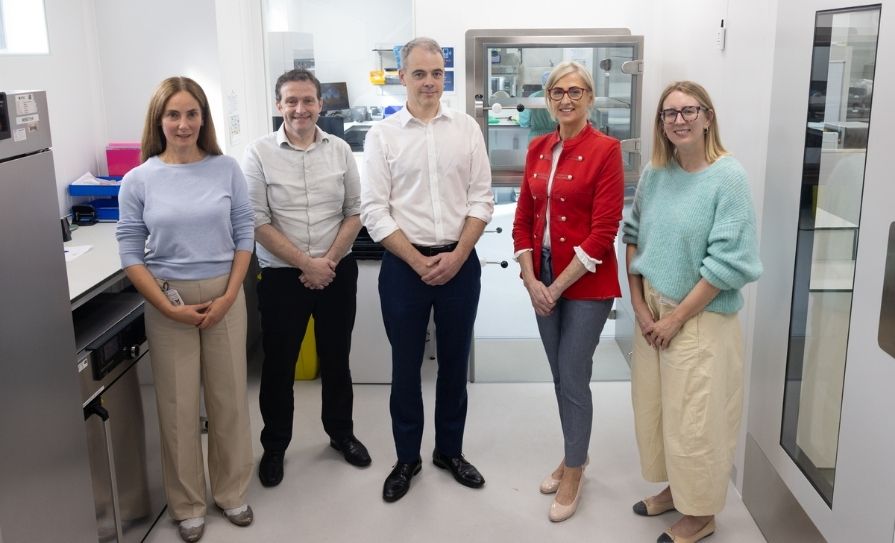Research is under way to determine whether the mutation-laden lineage BA.2.86 has the potential for global spread – or whether it is nothing to worry about.
Researchers are racing to determine whether a highly mutated coronavirus variant that has popped up on three continents will be of global concern – or whether the fuss will turn out to be much ado about nothing.
Several laboratories detected the variant last week, and it has been named BA.2.86. Although it seems to be rare, it is very different from other circulating variants and carries numerous changes to its spike protein, which is key to the body’s immune attack on the SARS-CoV-2 virus.
To many scientists, the emergence of BA.2.86 is reminiscent of the appearance of the Omicron variant in late 2021, when scientists in southern Africa noticed a weird-looking lineage that quickly went global. “There’s a little bit of déjà vu all over again,” says Adam Lauring, a virologist and infectious-disease physician at the University of Michigan in Ann Arbor, whose lab identified one person infected with BA.2.86.
Successive Covid-19 waves and booster vaccine roll-outs mean global immunity to SARS-CoV-2 is higher and broader than ever, and most scientists do not expect BA.2.86 to have the same impact that Omicron did. “There’s good reason to think it won’t be like the Omicron wave, but it’s early days,” says Dr Lauring.
WHAT DO WE KNOW ABOUT BA.2.86?
As of late August, the variant had been linked to six cases in four countries: three in Denmark and one in each of Israel, the United Kingdom and the United States. The World Health Organization, based in Geneva, Switzerland, has designated BA.2.86 as a ‘variant under monitoring’. “Almost certainly there are going to be other cases that will start popping up,” adds Dr Lauring.
The lineage seems to be descended from an Omicron subvariant called BA.2, which caused large case spikes in early 2022. However, the BA.2.86 spike protein – the molecule that SARS-CoV-2 uses to enter cells – carries 34 changes relative to BA.2. Large numbers of spike mutations have been observed in people with long-term SARS-CoV-2 infections, and it is likely that BA.2.86 emerged from one such chronic infection, says Jesse Bloom, a viral evolutionary biologist at the Fred Hutchinson Cancer Center in Seattle, Washington.
WHY ARE SCIENTISTS FOLLOWING BA.2.86 SO CLOSELY?
After Omicron appeared, SARS-CoV-2 evolution began to follow a fairly predictable course: successful variants emerged from circulating lineages after gaining a few key mutations that enabled their spread. BA.2.86, by contrast, is drastically different from widespread coronavirus variants, and in this way its emergence is reminiscent of that of Omicron and early pandemic variants including Alpha and Delta.
“Just like Omicron was a little out of left field, this BA.2.86 is a little out of left field,” says Dr Ashish Jha, a public health researcher at Brown University in Providence, Rhode Island, and a former White House Covid-19 response coordinator. “There is enough here to get us all to start paying attention.”
Many of the changes in BA.2.86 are in regions of the spike protein that are targeted by the body’s potent infection- blocking, or neutralising, antibodies, says Dr Bloom, who posted a preliminary analysis of the variant online last week. For this reason, there is a good chance that the variant will be able to escape some of the neutralising antibodies triggered by previous infections and vaccine boosters.
Another feature of BA.2.86 that has piqued scientists’ interest is its geographical distribution. None of the cases identified so far seem to be linked – including the three infections in Denmark, which were detected in different parts of the country. This suggests that the variant might already be fairly widespread, says Dr Bloom. “It’s got to have been transmitting a fair amount.” The UK Health Security Agency said that the UK case is in a person with no recent travel history, “suggesting a degree of community transmission within the UK”.
WHAT DO RESEARCHERS WANT TO FIND OUT?
Labs worldwide are now scouring patient samples, as well as wastewater, to get a sense of how widespread BA.2.86 is. “We want to try and understand how much of this lineage is out there,” says Dr Lauring. If
the current trickle of new confirmed cases turns into a flood, it will be a sign that the variant has the potential to compete with other circulating SARS-CoV-2 variants, including a more common lineage called EG.5, and cause a global spike in infections.
Virology labs in Denmark and the United Kingdom say that they are trying to isolate BA.2.86 from patient samples. Such work – and studies with safe models of SARS-CoV-2 created using pseudoviruses – will help researchers to gauge the variant’s ability to evade neutralising antibodies triggered by previous infections and vaccines.
Dr Bloom says that he is especially interested in seeing the extent to which BA.2.86 can evade neutralising antibodies triggered by a recent infection with a variant called XBB.1.5, because the latest Covid-19 booster vaccines are based on that variant’s spike sequence. “If something like [BA.2.86] became widespread, I think you’d want to start thinking about updating the vaccine,” he says.
SHOULD THE PUBLIC BE CONCERNED ABOUT BA.2.86?
“I don’t think anybody needs to be alarmed by this,” stresses Dr Bloom. “The most likely scenario is that this variant fizzles out, and in a month nobody other than people like me even remember that it existed.”
Even if BA.2.86 does becomes widespread – and proves adept at dodging neutralising antibodies, which seems likely, on the basis of its set of spike mutations – other forms of immunity will probably stop most people from getting seriously ill if they are infected, he adds.
Dr Jha says scientists should pay close attention to the variant. But he thinks the chances are “exceedingly low” that it will turn out to be any more severe than existing variants or cause the level of disruption seen with the
first Omicron waves, owing to the existence of widespread immunity.
The appearance of BA.2.86 has taken scientists by surprise – and shows that SARS-CoV-2 still has tricks up its sleeve that researchers will want to understand. “We’ll see if it’s important beyond that in terms of its public-health impact,” says Dr Lauring.







